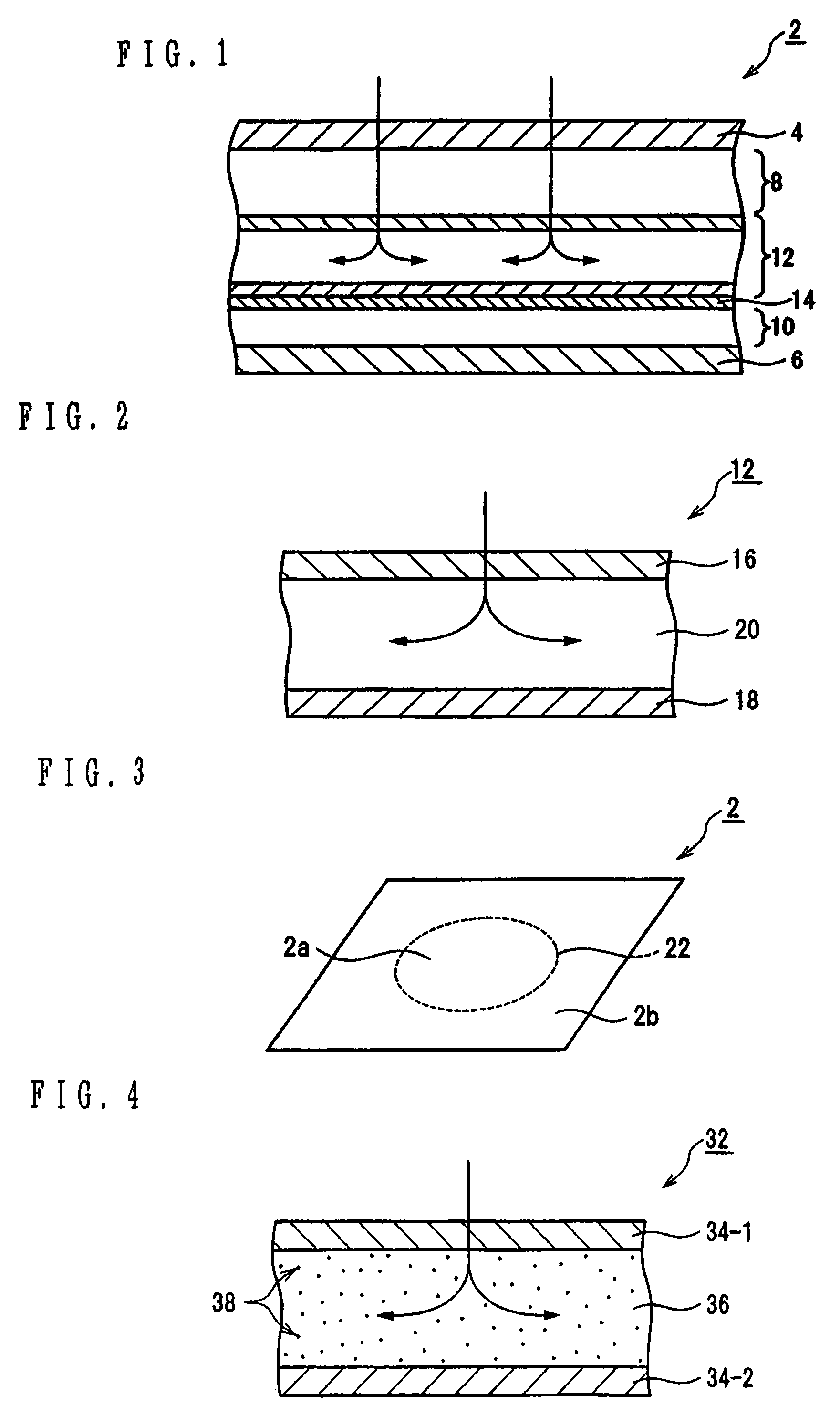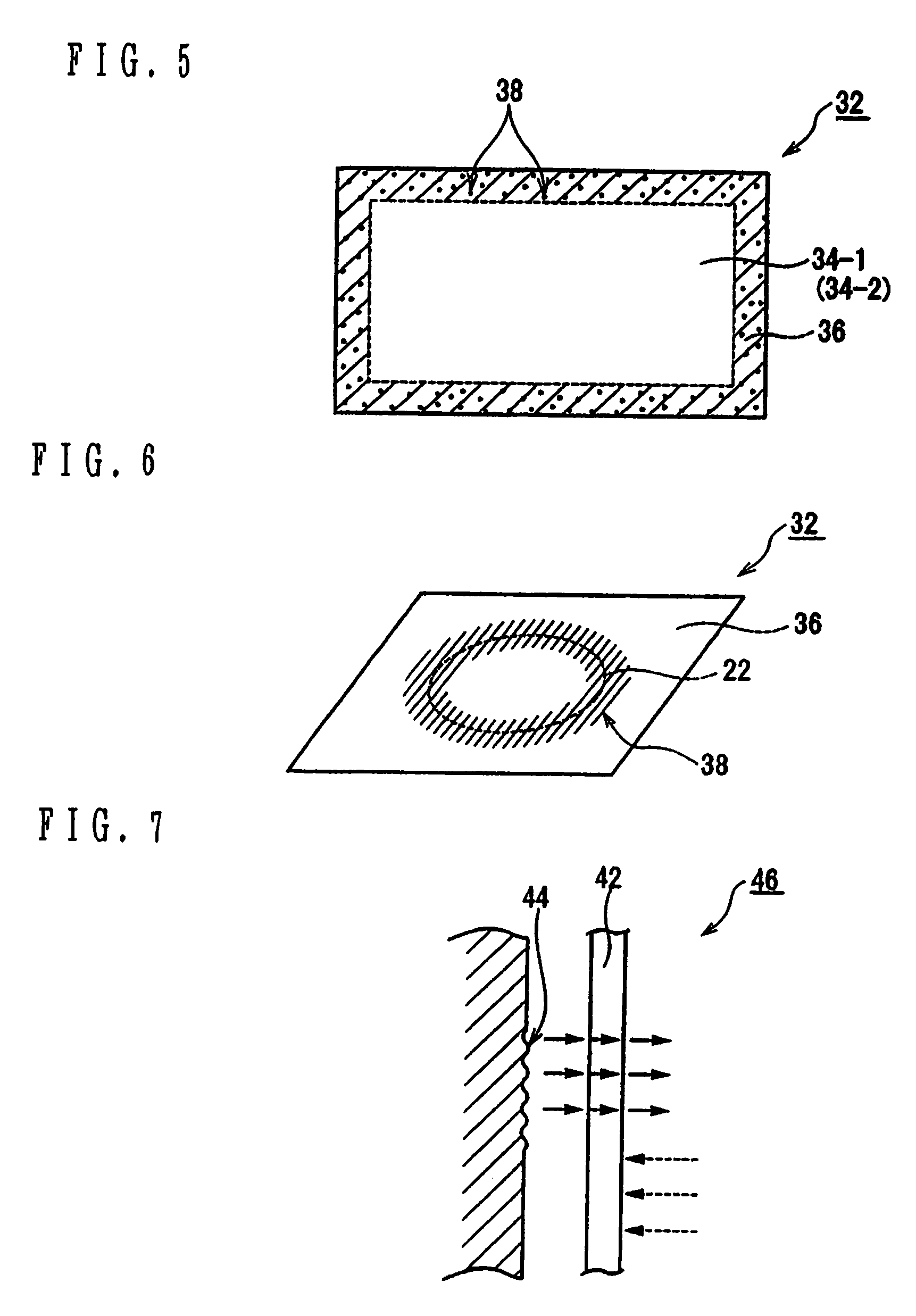Hemostasis tool having blood diffusion and absorption abilities
a hemostasis tool and ability technology, applied in the field of hemostasis tools having blood diffusion and absorption abilities, can solve the problems of increasing traffic accidents, large earthquake disasters, and people bleed in large amount, so as to improve the absorption ability of blood, stop bleeding, and rapid hemostasis
- Summary
- Abstract
- Description
- Claims
- Application Information
AI Technical Summary
Benefits of technology
Problems solved by technology
Method used
Image
Examples
first embodiment
[0036]FIG. 1 and FIG. 2 illustrate the present invention, wherein FIG. 1 shows a hemostatic tool 2 having blood diffusion and absorption abilities.
[0037]The hemostatic tool 2 is used to stop bleeding by absorbing the blood from the wound.
[0038]The hemostasis tool 2 includes a water-permeable inner material 4 on an inner side or a wound side, and a water-impermeable outer material 6 on a side farthest from the wound side.
[0039]Between the water-permeable inner material 4 and the water-impermeable outer material 6, a first pulp-cotton laminated body 8 is disposed on the water-permeable inner material 4, as shown in FIG. 1. A second pulp-cotton laminated body 10 is disposed on the water-impermeable outer material side. Between the first and second laminated bodies 8 and 10, a crust 12 and a polymer 14 are positioned. The crust 12 diffuses the blood that has passed through the water-permeable inner material 4 and the first pulp-cotton laminated body 8. The polymer 14 absorbs the blood d...
second embodiment
[0061]Next, the present invention is described below.
[0062]The second embodiment of the present invention is characterized by use of an artificial skin or suture material for the water-permeable inner material on the wound side.
[0063]More particularly, after applying the hemostatic tool onto the wound, the water-permeable inner material utilizing the artificial skin or the suture material is used to contribute to the formation of the scab. After the scab is formed, the hemostatic tool can be removed while only the water-permeable inner material is left on the wound.
[0064]Generally, there is a possibility that the scab may not be formed when the wound is large. Even when the scab is formed, it requires much time.
[0065]To obviate this inconvenience, the water-permeable inner material of the hemostatic tool is allowed to contribute, at least partially, to the formation of the scab. This permits rapid formation of the scab to achieve quicker hemostasis.
[0066]FIG. 3 illustrates a third e...
third embodiment
[0067]The third embodiment is characterized by a perforated tear-off line on the hemostatic tool 2.
[0068]More particularly, when lamination from the water-permeable inner material to the water-impermeable outer material is formed for the hemostatic tool 2, the tear-off line 22 is defined, e.g. in a circle shape, so as to tear off the hemostatic tool 2 in a certain shape, as shown in FIG. 3.
[0069]At this time, when forming the hemostatic tool 2 in the circular shape defined by the tear-off line 22, the tear-off line 22 is formed by an additional adhesive method such as the sheet-heel method so as to avoid unbinding of the lamination in which the hemostatic tool 2 is detached from the tear-off line 22.
[0070]When applying the hemostatic tool 2 onto the wound, as shown in FIG. 3, the hemostatic tool 2 is placed so that the center of the circular tear-off line 22 is positioned over the wound. In two portions 2a and 2b which are defined by the tear-off line 22, the part 2b of the hemostat...
PUM
 Login to View More
Login to View More Abstract
Description
Claims
Application Information
 Login to View More
Login to View More - R&D
- Intellectual Property
- Life Sciences
- Materials
- Tech Scout
- Unparalleled Data Quality
- Higher Quality Content
- 60% Fewer Hallucinations
Browse by: Latest US Patents, China's latest patents, Technical Efficacy Thesaurus, Application Domain, Technology Topic, Popular Technical Reports.
© 2025 PatSnap. All rights reserved.Legal|Privacy policy|Modern Slavery Act Transparency Statement|Sitemap|About US| Contact US: help@patsnap.com



